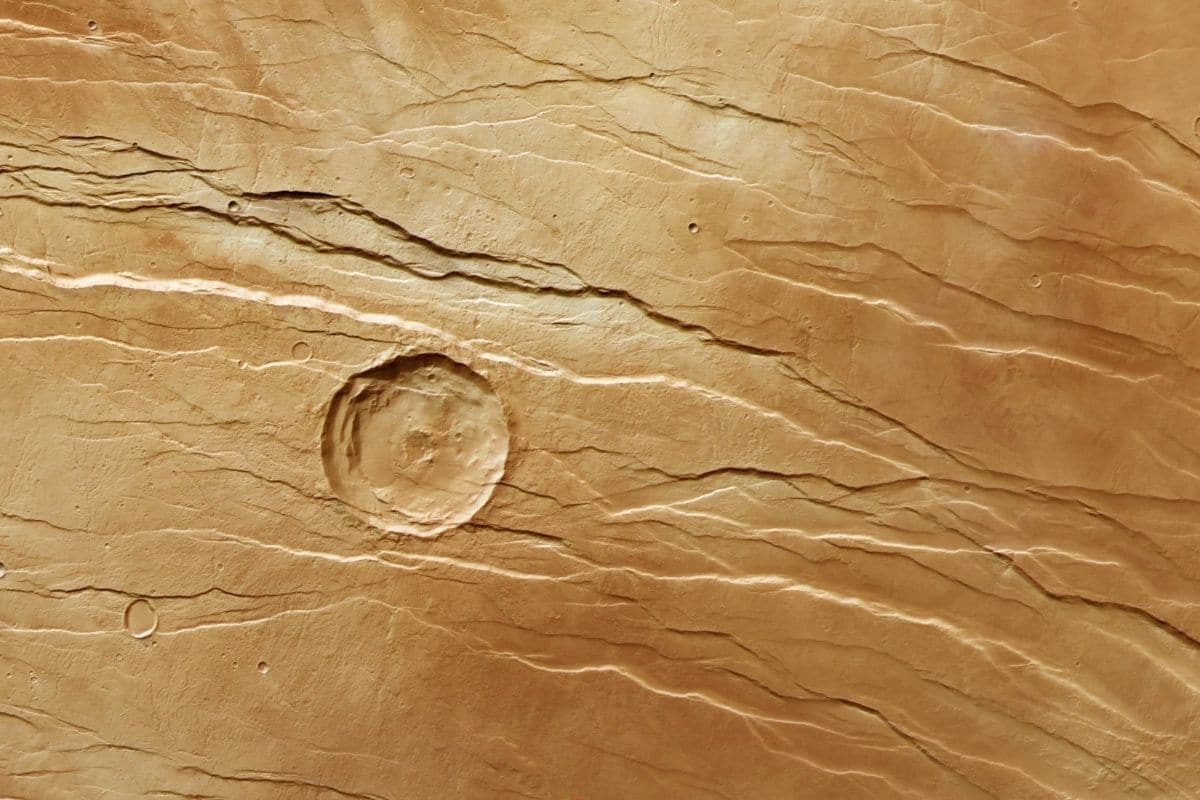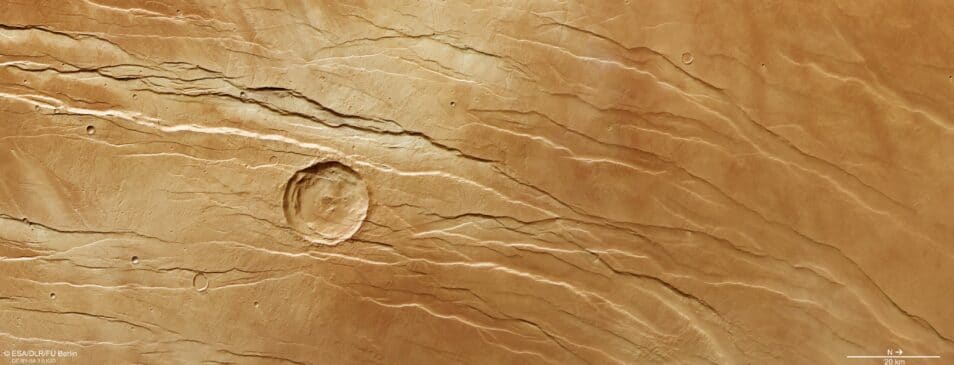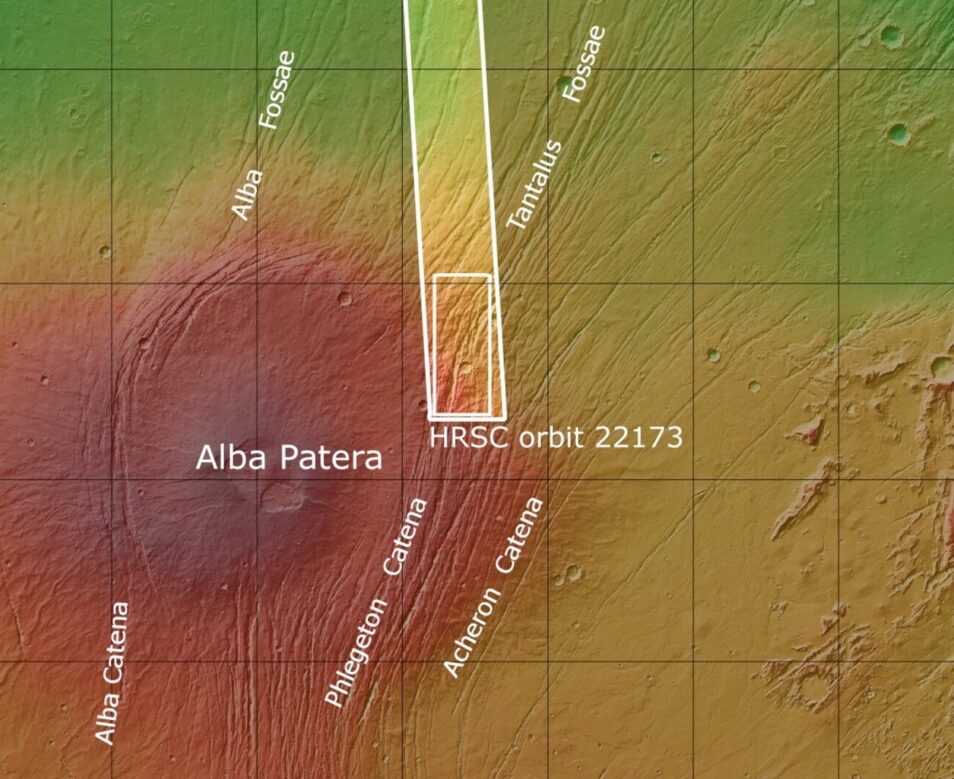

There are, of course, no cats living on the red planet, so these scratches came about in a different way. But how?
The space photo of the week was made by the Mars Express and shows one of the many fossae on Mars. These are long, wide grooves, which are hundreds to thousands of kilometers long. There are 56 such troughs on this rock planet. In the photo from the European spacecraft, we see a detail of the area we call Tantalus Fossae, named after the son of Zeus and Pluto. This is certainly not the largest fossa on the red planet. That honor goes to Sirenum Fossae. Sirenum Fossae has a total length of 2,735 kilometers, or the distance from Dublin to Moscow.

Click on the photo to view a larger version.
How does a fossa form?
A fossa is formed when a planet’s crust is stretched. Eventually, the surface breaks, creating a long, narrow depression. The fossae of Tantalus Fossae were created by the nearby volcano Alba Mons. This is the largest shield volcano in our solar system and has a diameter of 1600 kilometers. It’s not the tallest shield volcano, as that honor goes to Olympus Mons. As the volcano grew, the surface around the Alba Mons was deformed and eventually fractured. We also see this fossae on the other side of the volcano. The fossae around Alba Mons are up to a thousand kilometers long, up to ten kilometers wide and up to 350 meters deep.

The fossae surround the nearby shield volcano Alba Patera. The larger white box shows the area Mars Express photographed on July 19, 2021 during its 22173rd orbit. The space photo of the week is a crop of this large photo (the smaller white frame).
Mars is not the only planet with this fossae. 34 fossae have also been found on Venus. Fossae have also been spotted on Mercury, Enceladus (Saturn’s moon), Ganymede (Jupiter’s moon), and Triton (Neptune’s moon).
Very young and very old impact craters
In the photo we also see a large impact crater. If you look closely, you can see the lines of the fossae continuing into the crater. This means that this crater formed before the fossae and is therefore older. The slightly smaller crater at the bottom right arose just after the fossae.
Ten years of Mars Express
Next month it will be nineteen years since the European space agency ESA launched the Mars Express. The orbiter was assigned to study the atmosphere and climate of the red planet. Scientists also wanted to use the orbiter to learn more about the structure, mineralogy and geology of Mars. And if possible, the Mars Express also had to look for traces of water. Many of these goals have already been achieved. It doesn’t look like the Mars Express will be retiring any time soon, so hopefully next year we can celebrate the 20th anniversary of this powerhouse.
Source material:
Image at the top of this article: ESA